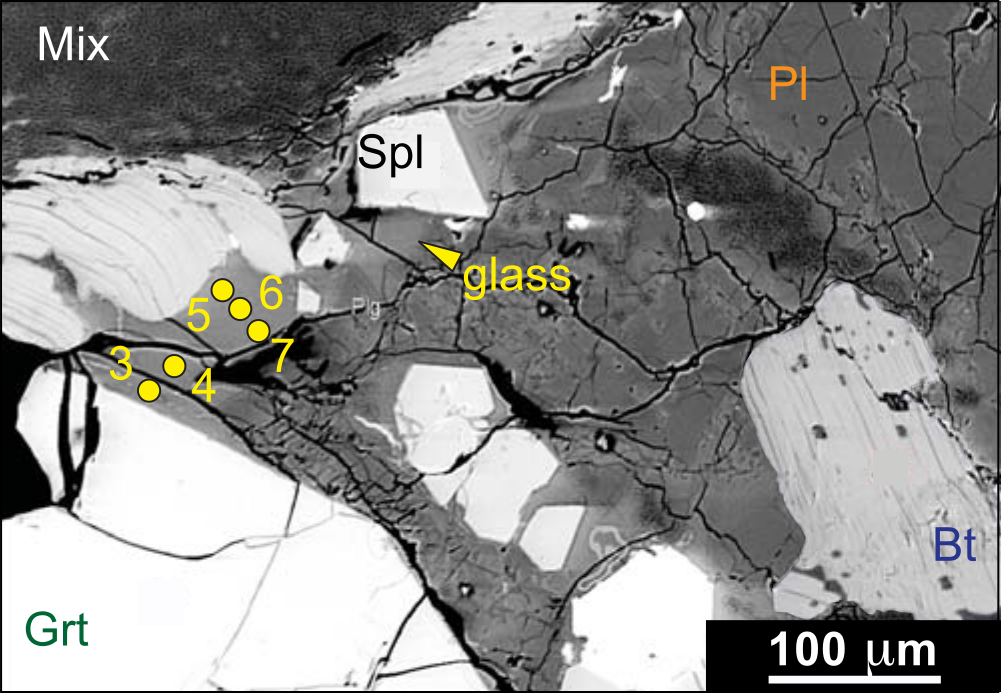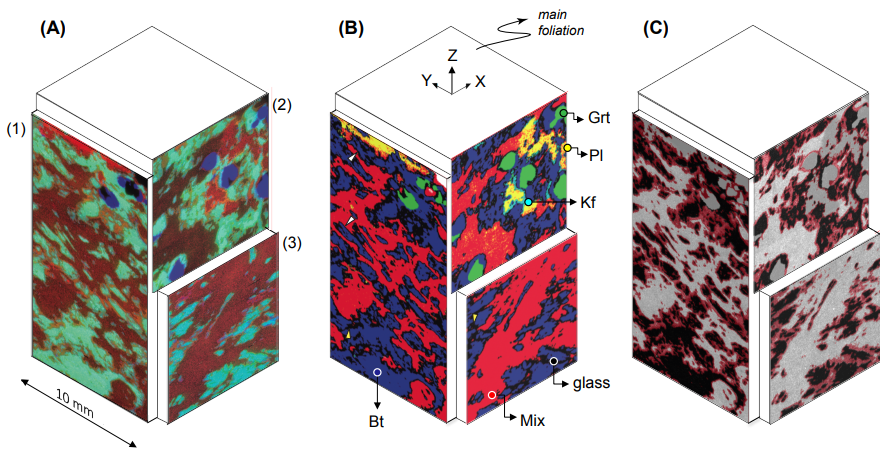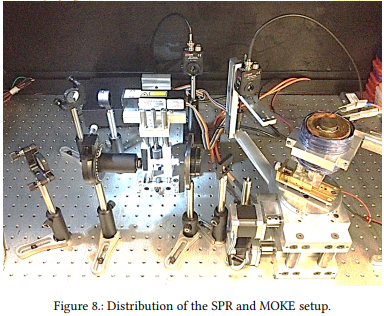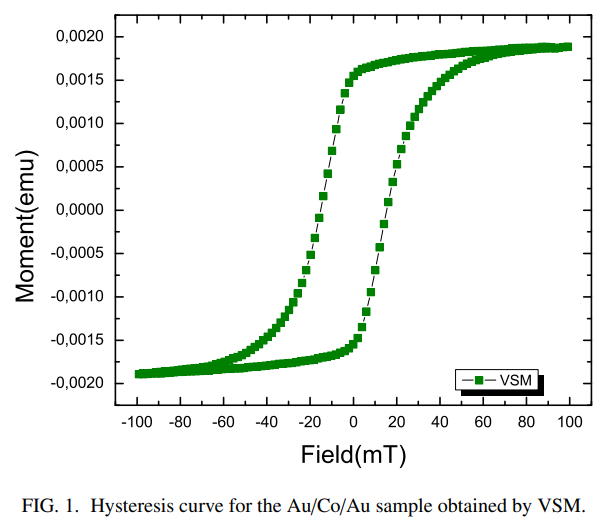Experiences with inorganic sample characterization



Mapping the distribution of melt via synchrotron μ-XRF
A representative sample of the garnet-biotite-sillimanite enclaves from El Hoyazo, Spain, was investigated by synchrotron μ-XRF and scanning electron microscopy to map the distribution of glass and minerals on three thin sections cut perpendicularly to the foliation. The combination of major and trace element μ-XRF distribution maps and detailed backscattered electron images evidence the presence of a pervasive and mostly interconnected glass network through the studied centimeter-scale sections. Interconnection is due to the crosscutting of films and glass-rich domains oriented parallel and at high angle with foliation. Although enclaves lost ~40–60% of melt, they still contain ~10–15% of glass, with a considerable proportion of it stored within the Mix, which is an aggregate of micrometer-sized fibrolitic sillimanite and glass. The distribution of glass (former melt) is not in textural equilibrium with the solid residue and resembles the interconnected network of deformation bands observed in migmatites of anatectic terranes at the mesoscale.
Read the publication!

Enhancement of the transversal magnetic optic Kerr effect: Lock-in vs. hysteresis method
The lock-in amplifier is often used to study the enhancement of the magneto-optical Kerr effect (MOKE) in the presence of plasmon resonances. In the present work we show that it is possible to investigate such effect replacing the lock-in amplifier by a compensator, filter, and differential amplifier. This allows us to extract the full hysteresis loop in and out of the resonance without the need of a lock-in amplifier. Our results demonstrate these two setups are equivalent to study the enhancement of the transversal MOKE (T-MOKE) in magnetoplasmonic systems.